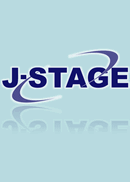Volume 1
Displaying 1-16 of 16 articles from this issue
- |<
- <
- 1
- >
- >|
-
1973Volume 1 Pages Preface1
Published: June 25, 1973
Released on J-STAGE: October 29, 2012
Download PDF (99K) -
1973Volume 1 Pages 1-20
Published: June 25, 1973
Released on J-STAGE: October 29, 2012
Download PDF (2376K) -
1973Volume 1 Pages 21-32
Published: June 25, 1973
Released on J-STAGE: October 29, 2012
Download PDF (1374K) -
1973Volume 1 Pages 33-43
Published: June 25, 1973
Released on J-STAGE: October 29, 2012
Download PDF (1760K) -
1973Volume 1 Pages 44-53
Published: June 25, 1973
Released on J-STAGE: October 29, 2012
Download PDF (1058K) -
1973Volume 1 Pages 54-60
Published: June 25, 1973
Released on J-STAGE: October 29, 2012
Download PDF (1027K) -
1973Volume 1 Pages 61-69
Published: June 25, 1973
Released on J-STAGE: October 29, 2012
Download PDF (962K) -
1973Volume 1 Pages 70-80
Published: June 25, 1973
Released on J-STAGE: October 29, 2012
Download PDF (1822K) -
1973Volume 1 Pages 81-96
Published: June 25, 1973
Released on J-STAGE: October 29, 2012
Download PDF (5237K) -
1973Volume 1 Pages 99-108
Published: June 25, 1973
Released on J-STAGE: October 29, 2012
Download PDF (2547K) -
1973Volume 1 Pages 109-114
Published: June 25, 1973
Released on J-STAGE: October 29, 2012
Download PDF (1395K) -
1973Volume 1 Pages 117-120
Published: June 25, 1973
Released on J-STAGE: October 29, 2012
Download PDF (1047K) -
1973Volume 1 Pages 126-132
Published: June 25, 1973
Released on J-STAGE: October 29, 2012
Download PDF (1523K) -
1973Volume 1 Pages 136-141
Published: June 25, 1973
Released on J-STAGE: October 29, 2012
Download PDF (3982K) -
1973Volume 1 Pages 144-151
Published: June 25, 1973
Released on J-STAGE: October 29, 2012
Download PDF (2421K) -
1973Volume 1 Pages 154-157
Published: June 25, 1973
Released on J-STAGE: October 29, 2012
Download PDF (504K)
- |<
- <
- 1
- >
- >|
